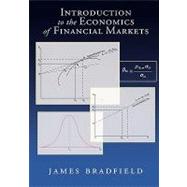
What is included with this book?
| Introduction | |
| The Economics of Financial Markets | |
| Financial Markets and Economic Efficiency | |
| Intertemporal Allocation by Consumers and Firms When Future Payments are Certain | |
| The Fundamental Economics of Intertemporal Allocation | |
| The Fisher Diagram for Optimal Intertemporal Allocation | |
| Maximizing lifetime utility in a firm with many shareholders | |
| A Transition to Models in which Future Outcomes Are Uncertain | |
| Rates of Return as Random Variables | |
| Probabilistic Models | |
| Portfolio Theory and Capital Asset Pricing Theory | |
| Portfolio Theory | |
| The Capital Asset Pricing Model | |
| The Informational Efficiency and the Allocative Efficiency of Financial Markets: The Concepts | |
| The Efficient Market Hypothesis | |
| Event StudiesPart VI:The Informational and Allocative Efficiency of Financial Markets: Applications | |
| Capital Structure | |
| Options | |
| Futures Contracts | |
| Insider Trading | |
| Summary and Conclusions | |
| Table of Contents provided by Publisher. All Rights Reserved. |
The New copy of this book will include any supplemental materials advertised. Please check the title of the book to determine if it should include any access cards, study guides, lab manuals, CDs, etc.
The Used, Rental and eBook copies of this book are not guaranteed to include any supplemental materials. Typically, only the book itself is included. This is true even if the title states it includes any access cards, study guides, lab manuals, CDs, etc.